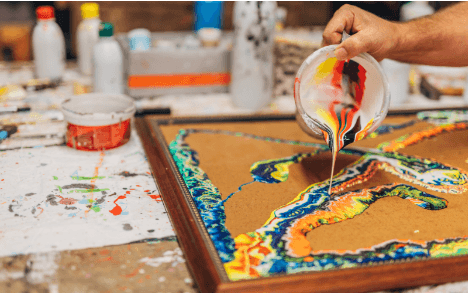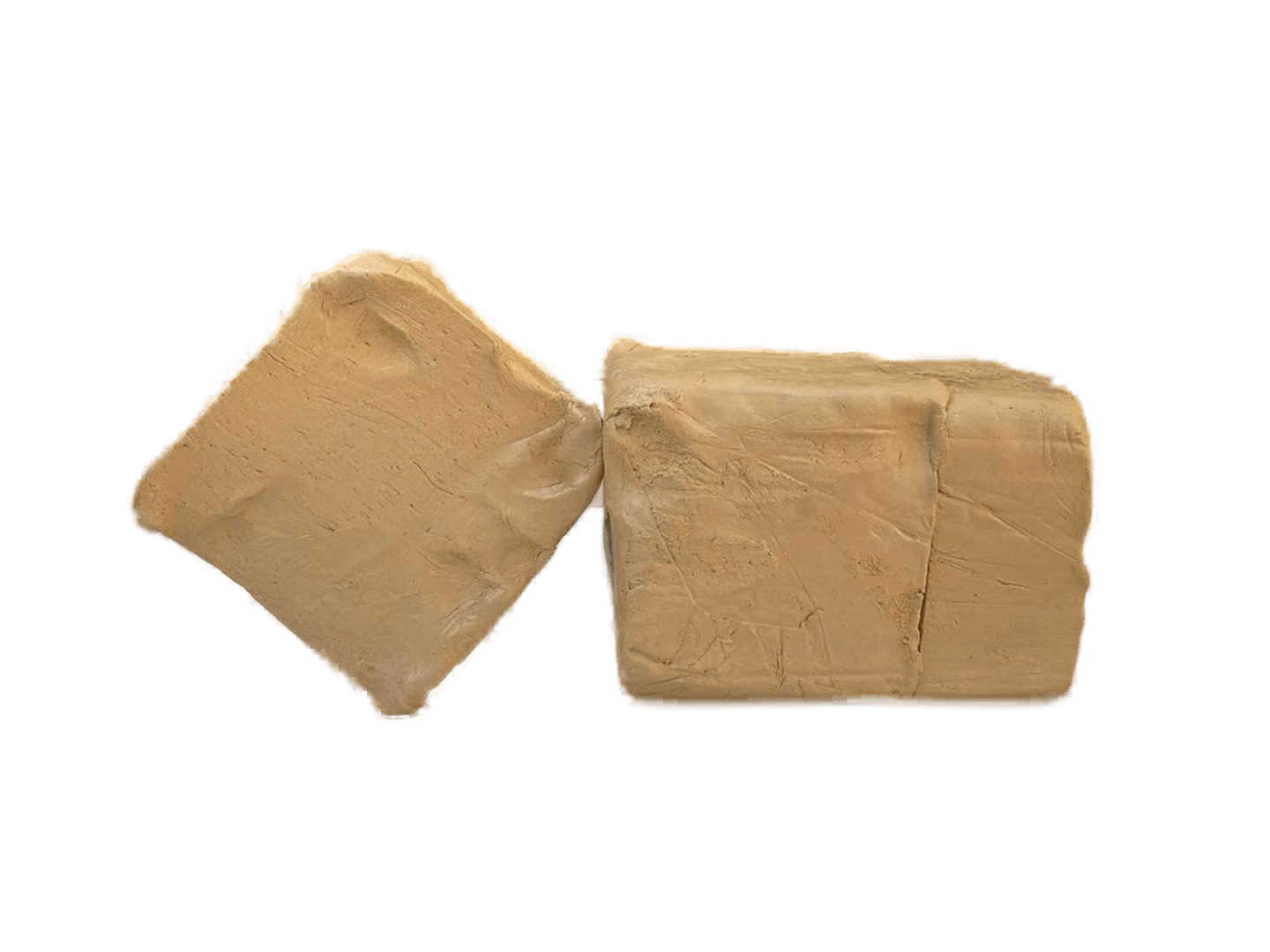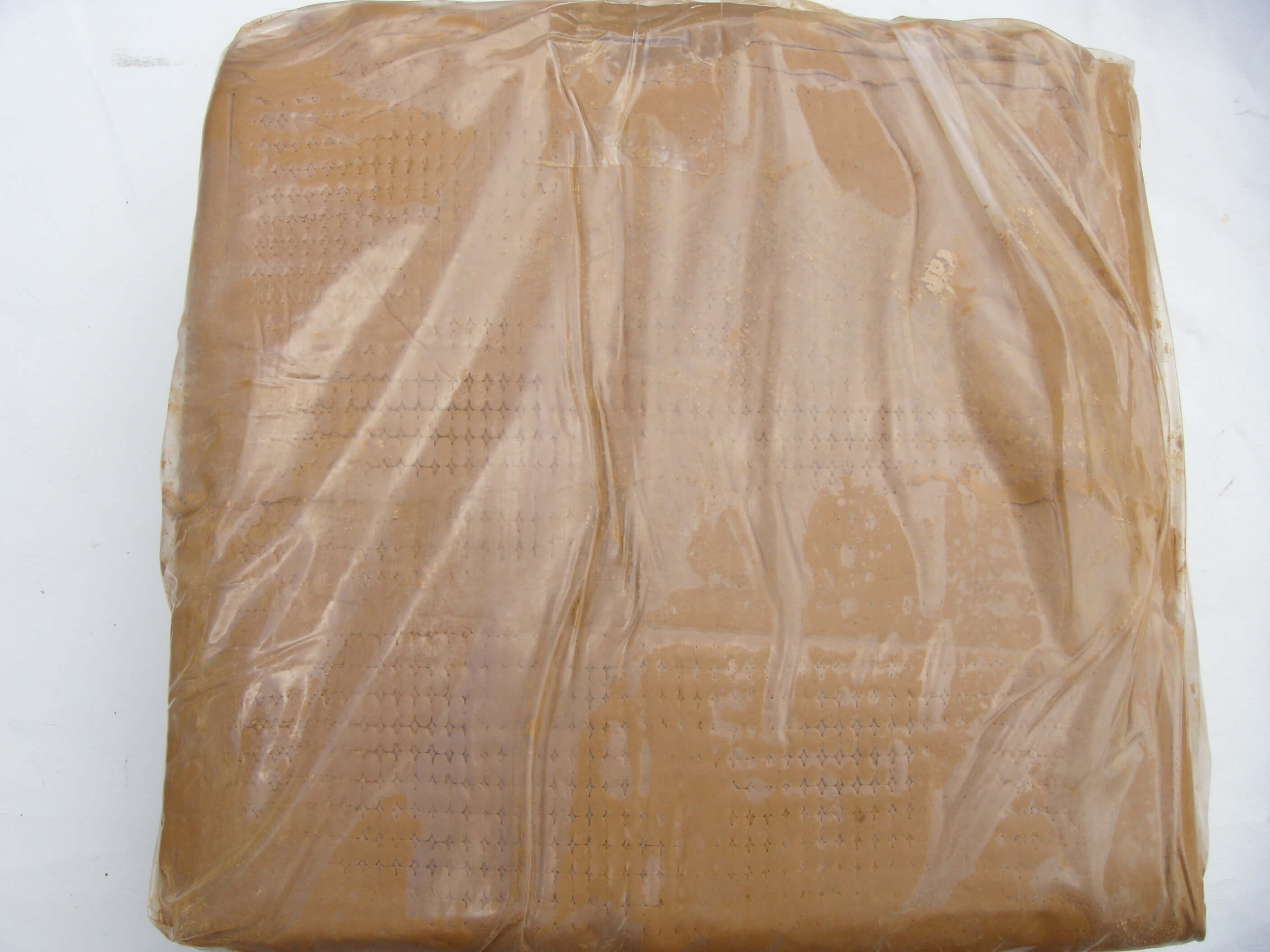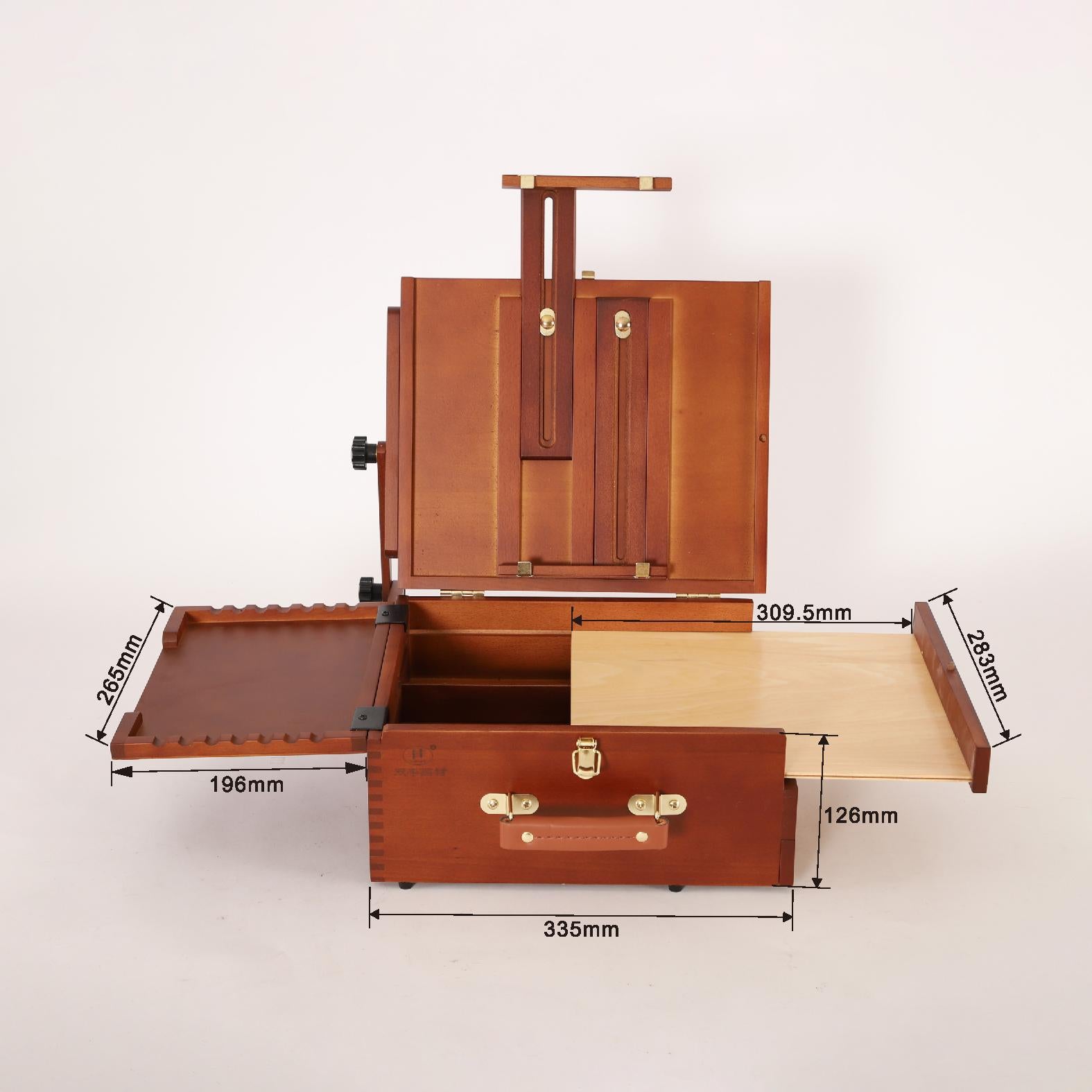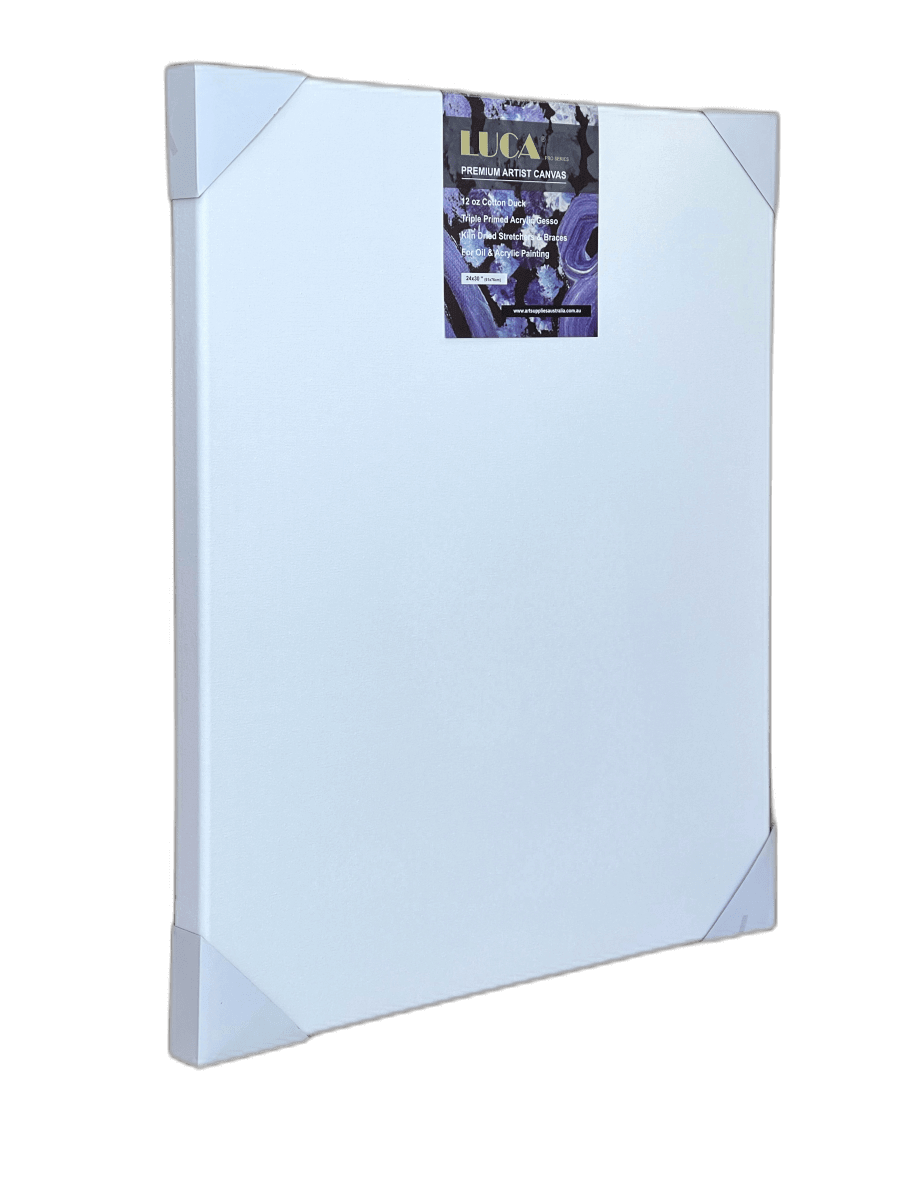In the vast galaxy of the art world, acrylic paint sparkles like a bright star, radiating an exceptional mix of versatility and accessibility. From art students to professional painters, acrylic paint has become essential to the artist's toolbox. Moreover, its unparalleled adaptability across myriad art forms makes it a favourite among creatives globally.
This guide will delve into the fascinating world of acrylic paint, from the basics for beginners to advanced techniques for seasoned artists. We'll cover the properties of acrylic paint, essential supplies, and various painting techniques and guide you through step-by-step projects suitable for beginners. You'll also find expert tips, unique applications, troubleshooting common issues, and advice on caring for acrylic paintings. So, whether you're new to the world of painting or looking to refine your skills, this blog post is for you.
Understanding Acrylic Paint

The Heart of Acrylic: Definition and Composition
Acrylic paint is a fast-drying paint consisting of pigment suspended in an acrylic polymer emulsion. Acrylic paints can be diluted with water but become water-resistant when dry. Depending on the technique, they can resemble oil or watercolour paints, offering the best of both worlds.
Pros and Cons: Advantages and Disadvantages of Acrylic Paint
Advantages
- Versatility: Acrylics can be applied to many surfaces like canvas, wood, paper, glass, or textiles.
- Fast-drying - Unlike oils, acrylics dry quickly, allowing you to work faster.
- Easy to clean - Acrylic paint is water-soluble, and brushes can be cleaned with soap and water.
Disadvantages
- Fast drying time: While this can be an advantage, it can also lead to a painting drying before it's finished.
- Changing colours: Acrylics darken slightly when dry, affecting colour matching.
Distinct Features: Key Characteristics and Properties of Acrylic Paint
- Flexibility: Once dry, acrylic paint, unlike oil-based paints, doesn't crack or turn yellow over time.
- Opacity: Acrylic paints can be thinned to a transparent state or used straight from the tube for a more opaque effect.
- Permanent - Once acrylic paint dries, it's permanent and water-resistant, so you can paint layers without disturbing the underlying colour.
Essential Supplies for Acrylic Painting

The Color Spectrum: Different Types of Acrylic Paints and Their Uses
- Heavy Body Acrylics: These are thick and great for creating texture with a brush or palette knife.
- Fluid Acrylics: These have a thinner consistency and are suitable for detail work, staining, and watercolour-like washes.
- Acrylic Inks: Superfluid, they're great for airbrushing, pen and ink style techniques, or when a smooth, even coverage is desired.
- Interactive Acrylics: These unique paints delay drying, allowing you to work with wet paint longer.
Tools of the Trade: Brushes and Palette Knives
Choosing the right brushes and palette knives largely depends on your painting style and the effect you're after. Here's a simple guide:
- Brushes: For detail work, go for small, fine brushes. For large colour applications and bold strokes, choose larger brushes.
- Palette Knives: Ideal for mixing paint and creating textured applications.
The Canvas: Surfaces for Acrylic Painting

Acrylic paints are versatile and can be applied to various surfaces, including:
- Canvases: Traditional choice, can be bought pre-stretched and primed.
- Acrylic Paper: Specially designed for acrylic paint
- Wood Panels: Provide a rigid surface for painting.
Bonus Supplies: Palettes, Mediums, and Varnishes
- Palettes: Used for mixing paints. It can be glass, plastic, or wooden.
- Mediums: Add to the paint to change its consistency, sheen, or drying time.
- Varnishes: Used as a final coat to protect the painting from dust and UV rays.
This is just the beginning of your journey into the captivating world of acrylic painting. Stay tuned for our next section, where we will delve into essential techniques, followed by beginner projects, advanced techniques, special applications, troubleshooting common mistakes, and finally, caring for acrylic paintings.
With the passion in your heart and the right tools in your hand, the canvas is your oyster, waiting for you to discover its pearls of limitless possibilities.
Basic Techniques for Acrylic Paintings

Setting the Stage: Your Workspace and Canvas Preparation
Begin your painting journey by establishing a comfortable workspace with good lighting. Ensure that your tools and materials are within easy reach. As for preparing the canvas, it usually comes pre-primed. However, you can apply an additional layer of gesso if desired. This layer provides texture for the paint to adhere to.
The Art of Color: Mixing and Creating a Palette
Acrylic paints can be mixed to produce an infinite variety of colours. Start with the primary colours—red, yellow, and blue—and experiment with creating secondary and tertiary colours. It's advisable to keep a palette, either a physical one or a piece of paper, to mix your colours.
Mastering the Brush: Blending, Layering, Dry Brushing, and More
Acrylic paint offers the flexibility to explore different brush techniques:
- Blending: Acrylics can be easily blended by working quickly before the paint dries.
- Layering: Acrylics are ideal for layering due to their fast-drying nature.- Dry brushing**: This technique uses a brush with very little paint to create a textured, stroke-visible effect.
Exploring Applications: Washes, Glazing, Impasto, and Sgraffito
Acrylic paint's versatility allows for a variety of application methods:
- Washes: This involves diluting the paint with water to create a watercolour effect.
- Glazing: Building up thin layers of transparent colour for a luminous effect.
- Impasto: Applying thick layers of colour for a textural, three-dimensional effect.
- Sgraffito: Scratching into the top layer of pigment to reveal areas of the underlying colour.
Getting Creative: Creating Texture and Using Additives
Texture can be created using various mediums and additives in acrylic painting. For instance, modelling paste can be mixed with paint to create a three-dimensional effect. Sand, beads, or other materials can also be added to the paint for a tactile texture.
Step-by-Step Guide: Acrylic Painting Projects for Beginners

The following projects are designed to help beginners gain confidence in handling acrylic paints:
Embracing Nature: Simple Landscape Painting
Step 1: Start sketching a simple landscape composition using a light pencil.
Step 2: Block in your main areas of colour with a broad brush.
Step 3: Gradually refine these areas, adding minor details as your layers dry.
Everyday Beauty: Still Life Painting
Step 1: Arrange a few objects on a table and sketch their outlines.
Step 2: Start painting the things, beginning with the most significant areas of colour.
Step 3: Refine the painting by adding more minor details and shadows.
Expression Unleashed: Abstract Acrylic Painting
Step 1: Choose a colour scheme.
Step 2: Apply colours freely, not worrying about creating a recognizable image.
Step 3: Experiment with different brushstrokes, tools, and techniques to create exciting textures and shapes.
Capturing Character: Portrait Painting
Step 1: Begin with a sketch of your subject, focusing on getting the proportions right.
Step 2: Block the main areas of colour, starting with the larger shapes.
Step 3: Gradually add more detail, paying attention to the variations in skin tone and the details in the eyes and hair.
Intermediate to Advanced Techniques and Tips
Colour Harmony: Advanced Color Theory
Understanding the colour wheel and the relationships between colours can significantly improve your painting. This includes understanding complementary colours, split-complementary colours, analogous colours, and triadic colour schemes.
Limited Palette Mastery
Working with a limited palette forces you to learn more about mixing colours and can lead to a more harmonious painting. It often involves using primary colours, white and possibly brown or black.
The Play of Light: Understanding Light and Shadow
Mastering the use of light and shadow can bring your artwork to life. This involves understanding the direction of light, the colour of light, and how it affects the colours and values in your painting.
Style Exploration: Different Styles and Genres
This could involve exploring different art movements (like Impressionism, Expressionism, or Pop Art), trying out various subject matters, or even mixing other mediums with your acrylics.
Finding Your Voice: Developing an Artistic Voice
Developing your artistic voice involves experimenting, reflecting on your work, and understanding what themes, subjects, or styles resonate with you. It's a personal journey that evolves.
Special Applications of Acrylic Paint

Blending Mediums: Mixed Media Techniques
Acrylic paints can be combined with other mediums, like collaging with papers, adding texture mediums, or incorporating digital elements. The possibilities are endless.
Flowing Colors: Acrylic Pouring
Acrylic pouring involves diluting acrylic paint with a pouring medium and then pouring it onto a surface in various ways. The result is a fluid, abstract piece of art.
Layers of Depth: Acrylic Glazing
Acrylic glazing is a technique where thin layers of transparent colour are applied, one after the other, creating a profound, rich colour effect and a sense of depth in the artwork.
Smooth Coverage: Acrylic Airbrushing
Airbrushing involves using an airbrush tool to spray a fine mist of paint onto a surface. This results in smooth and even coverage and is excellent for detailed work and smooth gradient effects.
Troubleshooting and Common Mistakes
Some common challenges and their solutions include:
Paint Problems: Drying Time and Paint Consistency Issues
Acrylic paints dry quickly, which can sometimes be problematic. Using a palette that moistens your paints, working in cooler temperatures, or using a retarder medium can slow the drying time.
Muddy Colors and Overmixing
Avoid overmixing your colours, which can result in muddy, unsaturated colours. Mixing on a palette and not directly on the canvas can also help.
Fixing Mistakes and Making Corrections
The quick-drying nature of acrylics allows you to paint over mistakes easily. Alternatively, a damp cloth or a light sanding can remove unwanted paint if it's still wet.
Caring for Acrylic Paintings

The Waiting Game: Properly Drying and Curing Acrylic Paintings
Allow your painting to dry completely before varnishing or framing it. While acrylics are touch-dry within minutes, they can take a few weeks to cure (harden) fully.
Framing and Displaying
Choose a frame that complements your painting but doesn't overpower it. When hanging your artwork, avoid areas with direct sunlight or extreme temperatures.
Cleaning and Preservation
Dust your painting regularly with a soft brush. If deeper cleaning is necessary, a slightly damp cloth can be used. Never use cleaning products or solvents.
Environmental Protection
Protect your artwork from UV rays and dust by applying varnish. This will also enhance the colours and provide a choice of finishes: matte, satin, or gloss.
Conclusion:
As we've journeyed through acrylic painting, we've covered the basics, explored techniques for beginners and advanced artists alike, and provided a step-by-step guide to creating your first artwork. We've also addressed troubleshooting common mistakes and offered advice on how to care for your masterpieces.
But this is only the beginning. The beauty of acrylic painting is its versatility and the endless opportunities for creativity and expression. So whether you're a novice artist just dipping your brush into the paint or a seasoned professional, there's always something new to discover in acrylic painting.
Are you seeking top-quality watercolour paper for your next acrylic painting project? Look only as far as Art Supplies Australia. We offer a diverse range of premium water colour paper pads that cater to artists of all skill levels. So whether you're a beginner or a professional artist, you can trust that these water colour paper pads will perfectly accommodate your acrylic paint application. So check out our collection today, and take a step forward in your creative journey. Happy painting!

